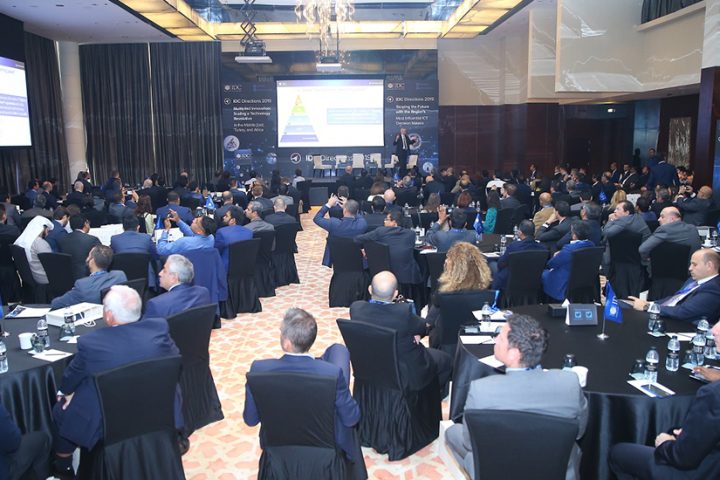How is IoT technology being integrated into the urban planning process to create smarter and more efficient cities?
The Internet of Things (IoT) has transformed how cities work. IoT devices and sensors are integrated in a variety of urban landscape features, ranging from streetlights to garbage cans, collecting real-time data on everything from air quality to traffic movement.
Urbanization is hastening the impact of digital transformation (DX) programs around the world and citizens today use a variety of digital tools and more services daily to pay bills, seek economic and emergency aid, and stay informed about health and safety issues.
Cities rely on a team of competent IT professionals to create and operate robust infrastructures capable of supporting complex applications and different network topologies to provide high-quality user experiences and service availability.
The increased reliance on digital services, along with the inability to discover performance issues due to visibility gaps across various hosting infrastructures, might complicate troubleshooting.
How is IoT technology contributing to environmental sustainability and energy efficiency in smart initiatives?
Because of the increasing reliance on new technologies such as 5G, IoT, and cloud systems, cybersecurity is critical to assure the safety and resilience of smart cities. This is especially true in the Middle East, where growing urbanization and technological advances are consistently reshaping city landscapes.
As devices and networks are so interconnected, Smart cities become vulnerable to cyber threats when they deploy these technologies to improve various services and experiences. This is why potential attackers target these weak points to interrupt key services, compromise personal data, and even gain illegal access to sensitive systems.
Robust security measures are desperately needed to safeguard these components from hackers. Without effective cybersecurity, these networked systems could be vulnerable to hacking attempts, data breaches, and other cyber disasters that could jeopardize the city’s infrastructure’s functionality and safety.
As smart cities collect and rely on real-time data for a variety of services such as emergency response, traffic management, and environmental monitoring, any breach in data integrity or security could lead to erroneous information and compromised decision-making. This could have major ramifications for public safety and city operations.
What opportunities and challenges does the combination of 5G and IoT present for businesses and local governments?
As smart cities in the Middle East continue to adopt future technologies such as 5G and IoT across both private and public sectors, NETSCOUT is well-positioned to match maximum security against regional cyber hazards. NETSCOUT is a 5G, 5G Advanced, 6G, and IoT technology expert. As a result, NETSCOUT has the appropriate solutions to monitor and secure these technologies.
Its Visibility Without Borders solution provides comprehensive insight into a smart city’s network infrastructure, applications, and services. This ensures that all components are monitored and secured, including those relevant to 5G and IoT.
Furthermore, the monitoring features of the system include anomaly identification, which is used to spot deviations from typical activity. This is critical in detecting potential threats or vulnerabilities in 5G and IoT systems. Cloud-based AI technologies will help operators discover the root cause of problems and support teams in preventing those problems from spreading.
As smart cities evolve and flourish, NETSCOUT’s scalable solution can scale with them, ensuring that compatibility and protection remain effective even as the technology landscape evolves.
How is the integration of IoT driving economic growth and innovation in urban areas?
IoT can create a bigger web of interconnected infrastructure in smart cities. According to a recent report, the global market for smart cities will grow from $121 billion in revenue in 2023 to $301 billion by 2032. This is mostly due to the digitalization of systems and the growing popularity of 5G.
Internet of Things (IoT) technologies – like robotaxis, smart streetlights, environmental monitors, and self-driving cars – collect data that can be sent to the cloud, analyzed, and used right away. Through digital change, this data can help make cities even better places to live. Smart traffic control systems that are based on the edge, for example, can use IoT data to help clear up traffic.
What infrastructure challenges do cities face in deploying IoT at scale, and how can these challenges be overcome?
Smart cities face many risks, such as DDoS attacks, data branches, cyberattacks and privacy issues.
Thanks to its Visibility Without Borders monitoring system, NETSCOUT deals with these risks and threats as fast. This solution offers useful information about how smart city networks and applications are working, in order to find and stop cyber threats quicker.
Smart cities can get consistent views of their network infrastructure, applications, and services, as well as how they depend on each other, by using Smart Data.
This makes it easy for city officials and cybersecurity experts to quickly spot unusual behaviour, find possible security holes and stop cyberattacks before they get worse. The solution’s focus on real-time data and its ability to deliver a full picture of all network elements helps preserve the security, reliability and integrity of smart city services.



















